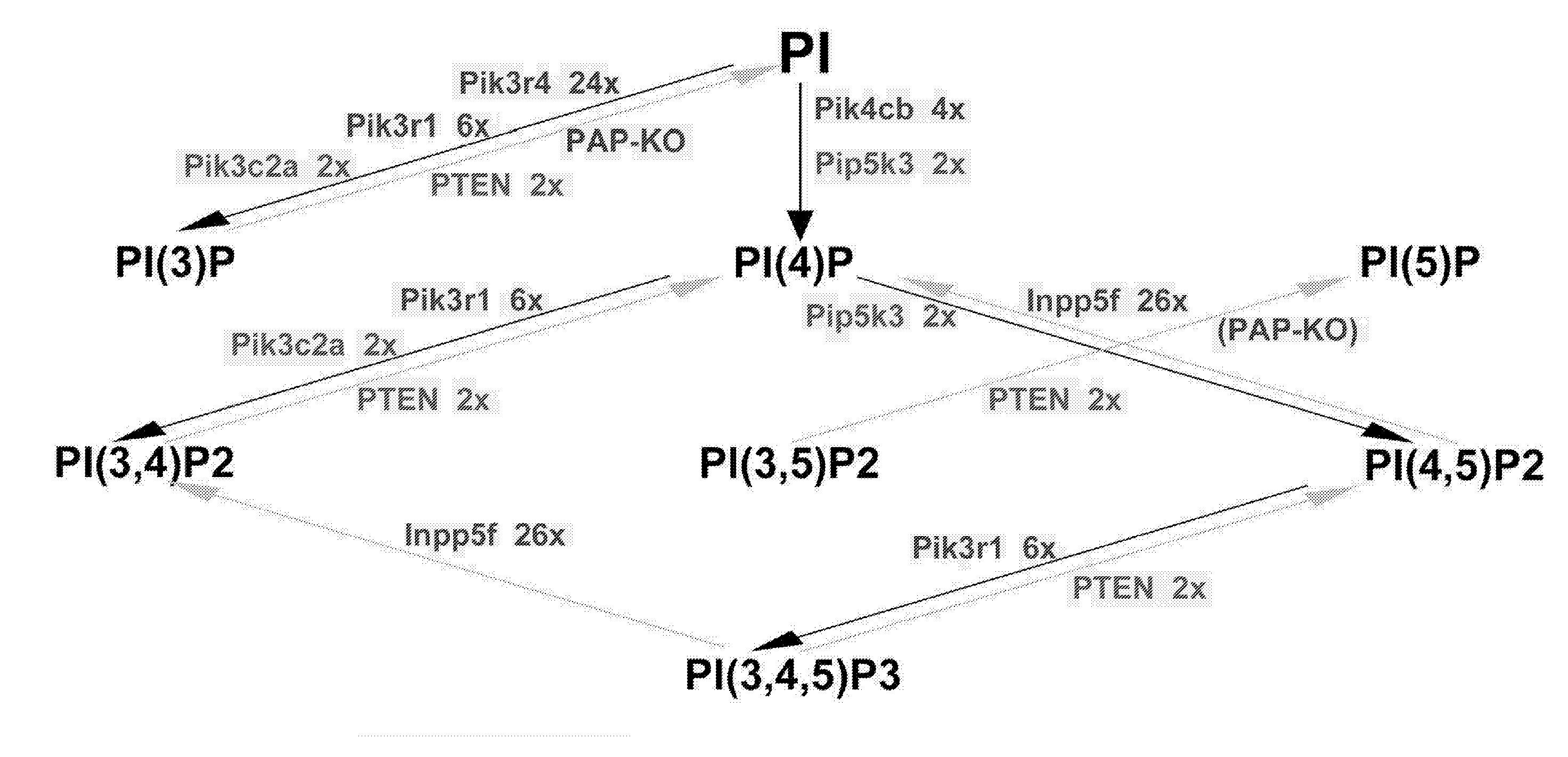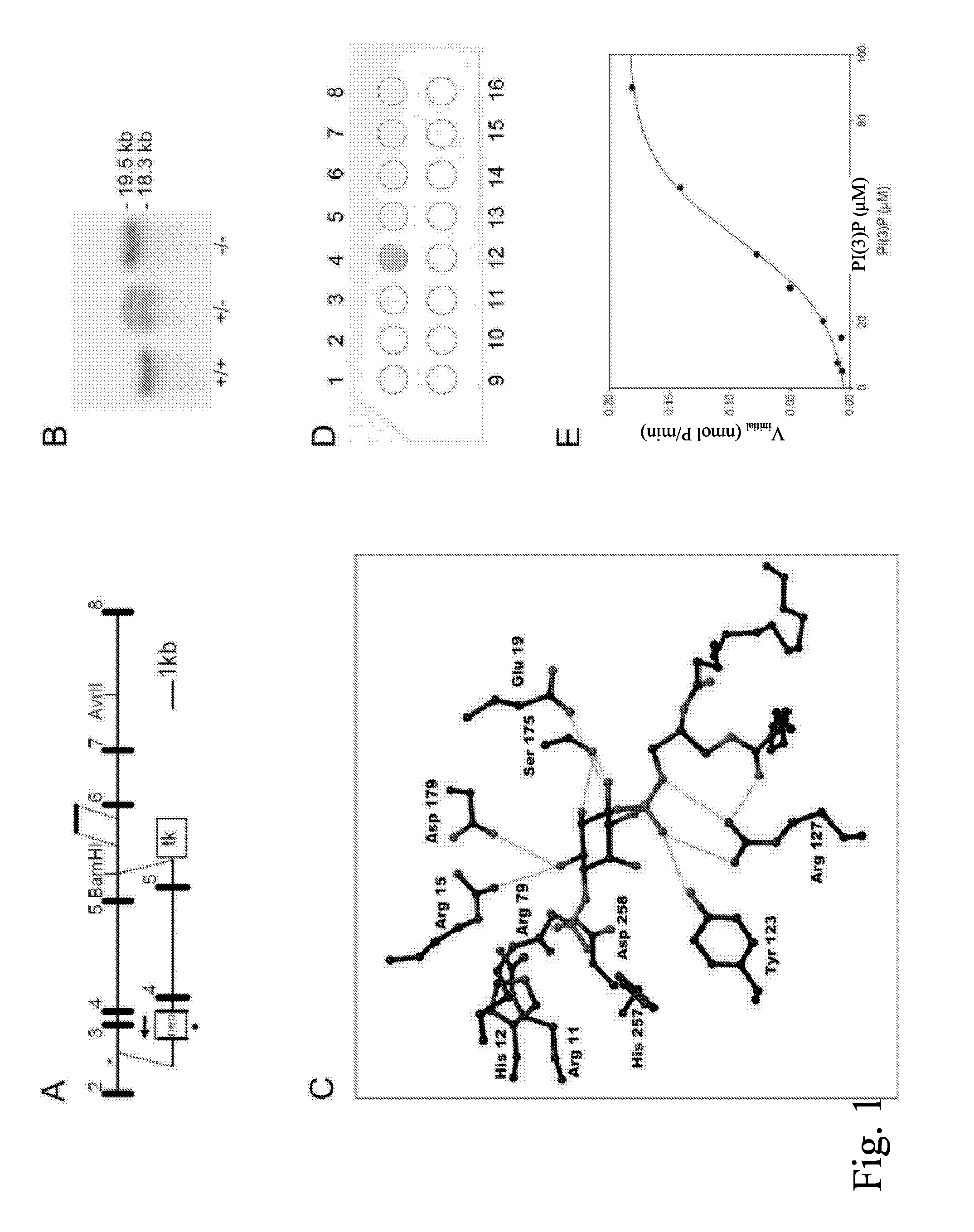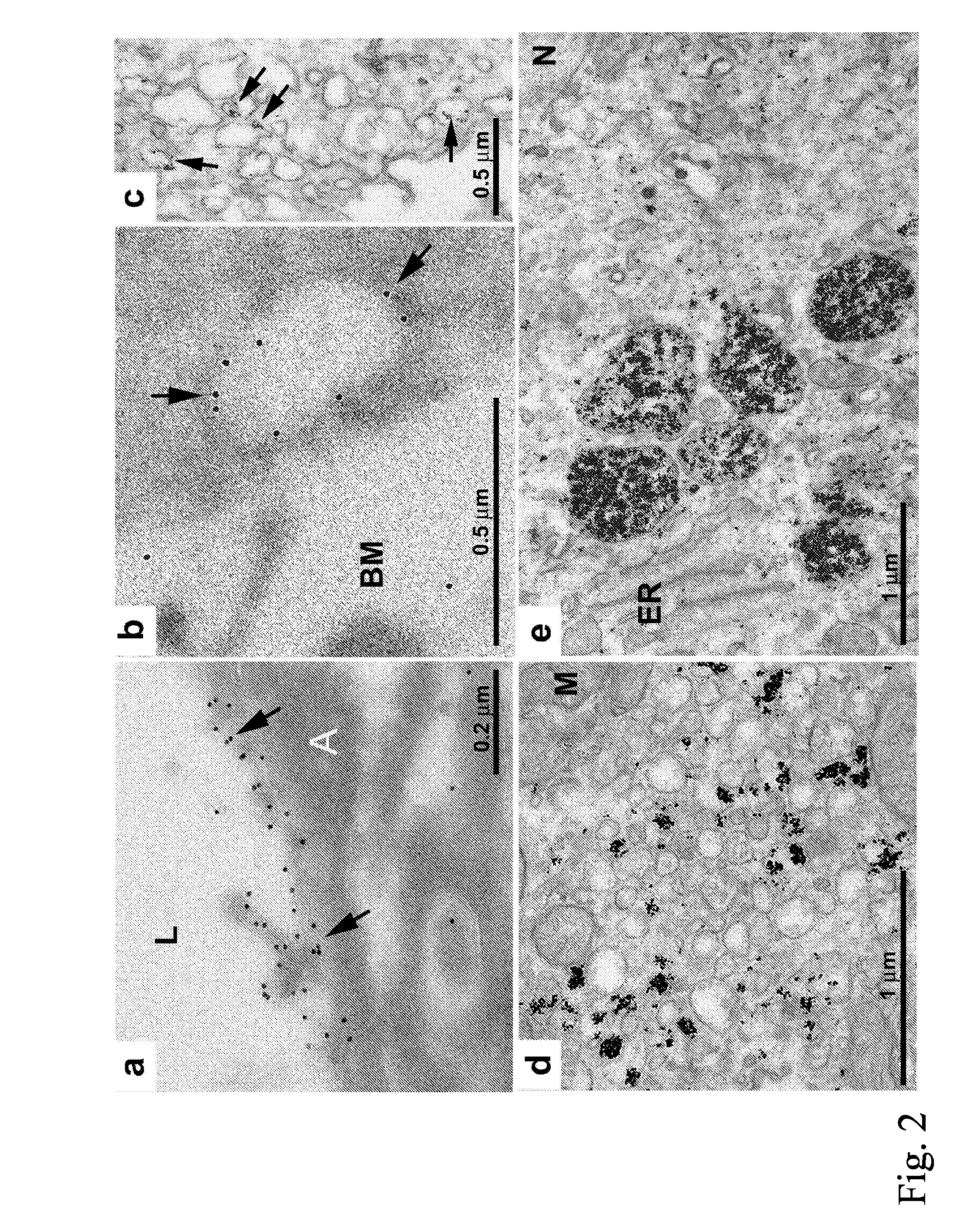Method For Testing A Compound For A Therapeutic Effect And A Diagnostic Method
a diagnostic method and compound technology, applied in the direction of biochemical equipment and processes, biocides, pharmaceutical non-active ingredients, etc., can solve the problem that no actual animal models have been disclosed
- Summary
- Abstract
- Description
- Claims
- Application Information
AI Technical Summary
Benefits of technology
Problems solved by technology
Method used
Image
Examples
examples
[0060] To demonstrate the idea of the current invention a knockout mouse model was generated, in which model the activity of PAP has been removed by replacing the exon 3 of mPAP gene with neo cassette, and targeting was confirmed with Southern blot (FIG. 1A,B). The PAP expressed in the prostate of PAP− / − mice was catalytically inactive but immunologically reactive (FIG. 7A,B). PAP knockout mice are fertile and currently there exist − / − mice with homogenous background to C57BL / 6 mouse strain. The removal of PAP activity inflicts changes in the mouse prostate, mainly in dorso-lateral and anterior lobes. Phenotypic changes can already be observed in heterozygotes.
[0061] The experiments described below are conducted with mice, but as a person skilled in the art knows, also other suitable animals may be used, for example rats. The PAPs and the functions thereof described herein are similar among different species.
PAP is PI(3)P-Lipid Phosphatase
[0062] The modeling revealed that PAP bi...
PUM
| Property | Measurement | Unit |
|---|---|---|
| Therapeutic | aaaaa | aaaaa |
Abstract
Description
Claims
Application Information
 Login to View More
Login to View More - R&D
- Intellectual Property
- Life Sciences
- Materials
- Tech Scout
- Unparalleled Data Quality
- Higher Quality Content
- 60% Fewer Hallucinations
Browse by: Latest US Patents, China's latest patents, Technical Efficacy Thesaurus, Application Domain, Technology Topic, Popular Technical Reports.
© 2025 PatSnap. All rights reserved.Legal|Privacy policy|Modern Slavery Act Transparency Statement|Sitemap|About US| Contact US: help@patsnap.com



